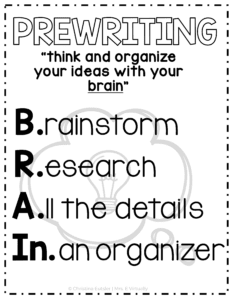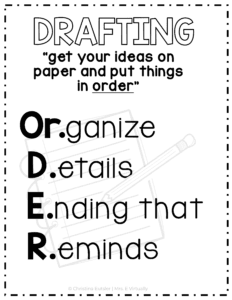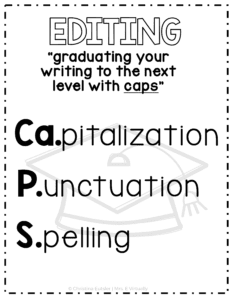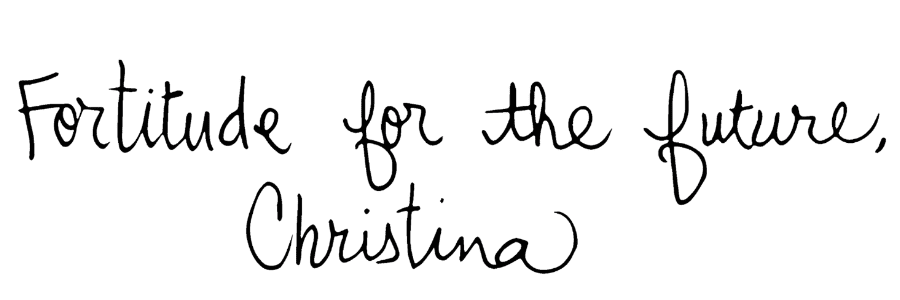When I think of the writing process for 2nd grade I think of the basic 5 steps: prewriting, draft writing, revising, editing and publishing. In my classroom, we work through the steps of the process in a week. Then start over with a new topic or theme the next week. Ultimately, when my students got through the first draft they thought they were done. Has that ever happened to you? Well, get ready for a way to make the writing process run smoothly and self sufficiently in your classroom. How, you ask? By putting the bulk of the work in the students’ hands and using an authentic audience.
I taught for 16 years in a Title 1 school with around 70% of students qualifying for free and reduced lunches. The students do not have much for prior knowledge and come to school well behind in vocabulary and reading. Almost all exposure to writing is done in the classroom. Some of my 2nd grade students are not sure what makes a complete sentence. Likewise, spelling is a challenge. I have had some days where a student won’t write because he or she cannot not think of an idea or the physical act of writing is so tiring.
Writing Process for 2nd and 3rd Grade
You might be wondering how I could put the bulk of the work in students’ hands? I use preplanning to structure the writing project from beginning to end using memory techniques. The Learning Center, University of North Carolina at Chapel Hill has some simple memory tricks that can help make learning stick. I use acronyms, visual metaphors and repetition with my writing process posters.
Prewriting (Brainstorming)
Think and organize your writing with your brain

First, when thinking with the Common Core Standards in mind (CCSS.ELA-LITERACY.W.2.2 and CCSS.ELA-LITERACY.W.2.3). I want my students to be successful in using details to develop points or expound upon a story. Students need to think and plan. This work comes before the start of the writing. Prewriting, in the writing process, helps to set students up for success. But a little work is needed in preparing the best graphic organizer for students to fill out. That’s right, a purposeful graphic organizer helps students focus their thoughts. Too many types of graphic organizers makes the process of prewriting convoluted. I stick to a couple at most. A narrative writing graphic organizer is going to differ from an opinion organizer. Also, a bad graphic organizer is going to frustrate you and the students.
The prewriting organizer also supports and gives order to the student’s thoughts. I am not a fan of a web or a 5 W’s organizer because they don’t give my students a way to transfer their thoughts into an order on the paper during drafting in the writing process in 2nd grade. Often, the organizers I use that are successful give students some sentence stems. This is a way for students to see the order their writing needs. In some cases, students are assisted getting ideas onto the organizer so that their ideas are on paper. Then they have something to refer to when they get to the rest of their writing work. When my classroom went 1:1 with chrome books, the graphic organizers could even be filled out on a computer. (So handy!)
Writing with the audience in mind
This is also the step for students to start thinking about their audience. Not in the publishing step as I previously thought. When students start with their audience in mind it helps them focus on making sure that their audience will understand the topic. This is very helpful when they are writing about something I have no idea about. So they don’t leave out important explanations and details.
Draft Writing (Sloppy Copy, Rough Draft)
Get your ideas on paper and get things in order

I used to refer to the drafting part of the writing process in my 2nd grade classroom as the “sloppy copy”. I have since stopped because I don’t want the copy to necessarily be sloppy. It is a basic version of what the final version will be. But I found my students trying to rush through and so it was sloppy. Then they have so much work in revising and editing that it becomes daunting. Writing the first draft is a process of taking those ideas, carefully thought through, and turning them into an organized version on paper. Drafting is an important step to put the details in an order that will be developed in the revising step. I love having chrome books in the classroom because it gives students a way to writing and revise easily.
Revising
Make your writing stronger

Revising is always my favorite part of the writing process in 2nd and 3rd grade, for myself and for my students. Just getting the ideas down on paper is hard but making them better is like a game. The trick is getting students to see that their writing is not perfect because it is on paper or computer. In class I model my own writing, as well as, have student volunteers. Writing is very personal and for many students it can feel like an attack if suggestions are made. We used the feedback sandwich method in my classroom.
This step is also the step that felt like it needed me, the most, as the teacher. Sometimes I felt like a chicken with her head cut off. If structured well, this step can run itself. This is why I structured the writing process in my classroom so that it would have a sense of predictability. First, a graphic organizer is fill out. Next, a rough draft was written in an organized way. Then, the details were added to make the writing stronger. I also used checklists so that students or peer reviewers could make sure that the parts of the writing process were actually making the writing stronger.
Editing
Graduating your writing to the next level

In my experience, editing is one of trickiest steps of the writing process for 2nd grade students. This is why I always start my first editing lesson in a graduation cap and robe with music as a mood setter and another memory device. “Pomp and Circumstance” does a great job getting students in the right mindset. We get prepared to look at their own writing and graduate it to the next level.
CUPS to CAPS
I know that many teachers use the acronym C.U.P.S. for Capitalization, Usage, Punctuation and Spelling. When I taught 3rd grade, I modified it to be Ca.P.S. for just Capitalization, Punctuation and Spelling. I used this also in my second grade classroom and found that it worked well. I found that these elements are the most important skills that my students need in my Title 1 school. Not that Usage is not important, the students were most likely to catch these mistakes in the revising step during the read aloud part. For me the acronym of CUPS is meaningless. When it comes to the process of writing, CAPS helps students remember that the writing is gaining a new step of sophistication (visual metaphor).
Plus, I get to get theatrical with the graduation 👩🏼🎓 theme. Editing is where you “graduate” your writing, making it more grown up because it looks the part by having capital letters, punctuation, and correctly spelled words.
All school year we focus on having capitals, punctuation and a strategy for correctly spelling words. My students won’t not check it much until the editing step in their writing process. I refer to the Editing Posters and checklists to help reinforce what to look for and the rules for capitals and punctuation. I have a separate strategy for spelling because the students are not all avid readers and spelling does not come naturally to most in my classroom.
Publishing
Rewrite for your reader

Publishing in the writing process is always like pulling teeth until they have an authentic audience. “Why do I have to rewrite it?” is a question that I get frequently. Does that happen to you too? Publishing may be tough but it is important for students to be writing for an audience to have a vested interest in completing the writing project with purpose. When students know that someone other than their teacher and classmates is going to see and read their writing, the level of effort goes up.
Publishing in 2nd and 3rd grade can come in many forms. If you have chromebooks the writing can be typed and shared with all sorts of audiences. The parents in my classroom liked Seesaw. It gave them a way to comment on their child’s work and share it with other relatives.
Audiences
So many times students only have one audience…teachers. This can make writing boring for kids. Have a variety of audiences for students to write to, it makes more meaningful.
Parents, grandparents, younger students, older students, classmates, future teachers, past teachers, friends
Types of Products
The ways to publish students writing are endless but sometime coming up with ideas can be challenging. My favorite tried and true was just having the students type it up on a Google Doc. Then they could be creative with font, size, color and what ever else they needed. Some other ideas are making a script for a video, newspaper article. Also, making a picture book on Google Slides works for narrative and expository writing.
So that is how the writing process can be easy and now for the free. My posters with acronyms and visual metaphors are available FREE just for signing up for my newsletter. My writing process posters are perfect for second or third grade (I’ve used them in both). They have acronyms that help students remember what to do in each part of the writing process as well as picture clues to help student who are visual learners.
I would love to know what you are doing in your classroom for writing. Let me know in the comments below. ☟


Hi there!. I filled out the form with my name and email but didn’t receive the downloads for Writing Process for 2nd Grade Made Easy and Free. I checked my email, thinking there might be a link sent to me but I don’t see one. Thank you for your help.
Michele
Sorry about the trouble. I got you signed up and you should be able to check your email now for the details. Thanks! -Mrs. E